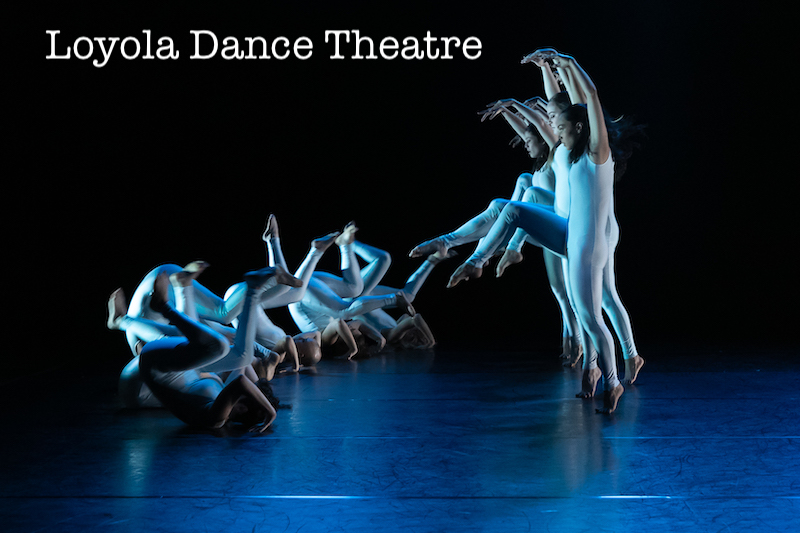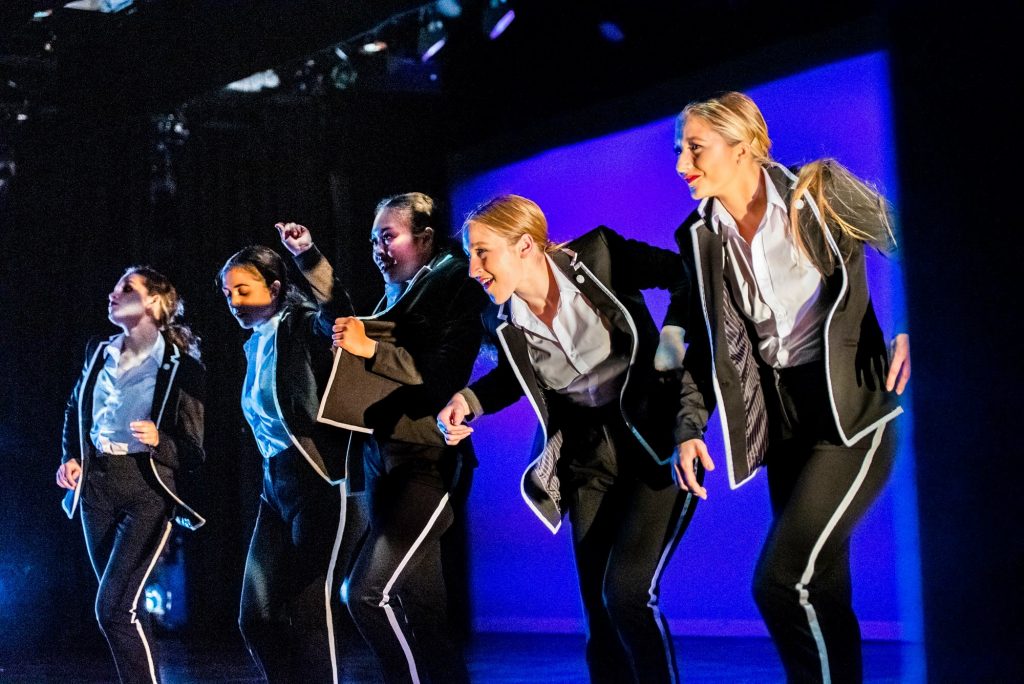photography by Emma Petersen
Loyola’s dance program heavily focuses on the concept of dance as research. Research in dance is a practice-based process. In an article by Brad Haseman, “A Manifesto for Performative Research,” this research is described as a qualitative process. The traditional process of gathering findings follows a quantitative process that involves high levels of structure. However, Haseman highlights the messiness and unknown that comes with researching through personal experience and other qualitative means.
The Loyola Research in Dance course has been exploring a qualitative process through attending the American College Dance Association conference. ACDA gave dancers the opportunity to participate in classes, perform work and present choreographic work, and watch pieces by other students, faculty from other universities and works by guest artists.
Below are testimonies from five dancers who have gotten to present work at ACDA, the Loyola University Museum of Art, Insaide Dance Festival and J e l l o, respectively, and will have the opportunity to present their work on Saturday, April 13th at 11:30 a.m. at Loyola’s Undergraduate Research Symposium.
Five Herstories
Five Herstories, choreographed by Loyola senior Isabelle Taylor, explores how history can shape the identity of individuals and communities. Specifically, Taylor said she was interested in how the movement and energy of male-dominated vocal groups, particularly during the Motown era, could be appropriated into the female equivalent.
Oftentimes, practice-based research is described as messy. Taylor saw this through her process. Even though she had ideas and had planned for rehearsals, Taylor said the real research came from exploring ideas in space with the dancers.
“Unlike traditional, academic research, findings in dance are continuously evolving,” Taylor said. “Specific to this process, I found it really interesting how the meaning of the piece really developed with time. Time provided increased nuance, which brought so much more depth to the performance.”
Five Herstories was presented at Loyola’s 2018 Dance Composition Showcase, Loyola’s 2018 Annual Dance Concert and the 2019 ACDA regional conference.
Mind of Movement
Senior dance major Sarah Fluegel began a research process almost a year ago. Fluegel received a Provost Fellowship to help fund a four-week long Gaga intensive at the San Francisco Conservatory of Dance during the summer of 2018.
Fluegel choreographed a portion of a solo before attending the intensive and choreographed the other portion of the solo after. Fluegel said she decided to do this because she was hoping to find movement that lived in her body unconsciously through practicing Gaga.
“My experience has been that practice-based research is a fantastic way to approach an actual research topic, while taking into account the context that surrounds that research,” Fluegel said. “For dance specifically, time, place, setting, audience members, what I ate that day…anything and everything can affect the research I do on stage and the results I find.”
In addition to presenting Mind of Movement at ACDA, Fluegel also performed at J e l l o refresh. According to Fluegel, presenting practice-led research more than once, in unique circumstances is important to the research process as a whole.
The Function of Fear
Senior dance major Demi Agaiby created a work looking into fear at the subconscious level and how fear interconnects learning and memory. For this process in particular, Agaiby said she made sure to include individual movement phrases to match each dancer’s individual style.
For Agaiby, a lot of her research was gained through having her piece performed, rather than solely learning from the rehearsal process.
“While it can be extremely compelling to be researching with a set od dancers in the studio space, the true research comes when the dancers hold the obligation of telling their personal story to a complete group of strangers,” Agaiby said. “As a choreographer, it can be vulnerable to allow this process to happen, but it is also extremely rewarding to witness each dancer offer their authentic selves to the movement.”
Agaiby’s work was selected to perform at Inaside’s Choreographic Sponsorship Event.
Aftertaste
Inspired by LUMA’s Flash Forward exhibition, Aftertaste, choreographed by sophomore dance major Anna Goetz, explores the formation of groups. Goetz used her piece to create a fabricated history of human interaction.
“I see choreography being similar to poetry,” Goetz said. “You take things or topics you as a person enjoy and synthesize them into separate lines. Each of these lines use certain techniques to convey meaning to viewers without screaming the concept in the viewers’ faces.”
How to Scream in Color
Junior dance major Abby Darrow also presented a work at LUMA’s Flash Forward Exhibition. Her work How to Scream in Color referenced the shapes and sculptures within the photographs to help amplify the social justice message of the photographs.
Darrow said the choreographic research process has helped her know more about herself as a dancer, and help her to find what she values as an artist.
“Of course, I believe the work should always be taken seriously, but once you attach a strive to perfection to it, it becomes an unhealthy obsession that I think practice led research rids itself of.”
Particularly, Darrow enjoys how each process involves a different group of dancers and said that her cast helped to influence the end product of her work.

